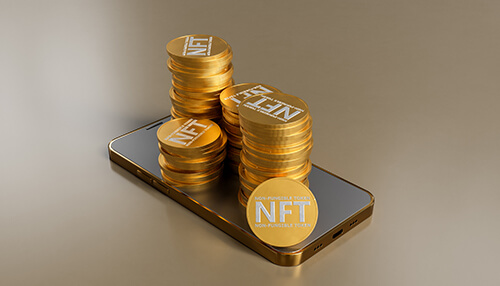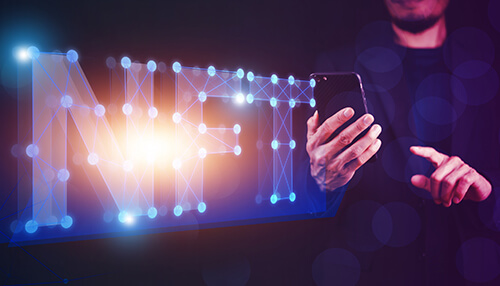$91.8 million for an “artwork”. You might be wondering if that’s a Picasso or a Van Gogh. No, the artwork is by Pak and the artwork is not a painting nor a sculpture. It’s an NFTs. It’s actually the most expensive NFT sold to date.
NFTs are on the road to becoming mainstream and there are a lot of people who would like to know more about them. This is where a translation company can help. Translation can help spread the word about this new form of investment.
What are NFTs?
Before we go any further we have to answer a few questions. First of all, what are NFTs?NFTs stand for Non-Fungible Tokens. Think of an NFT as a digital asset that represents something in the real world like music, videos, and artwork. The most famous types of objects that are associated with NFTs are artwork. These digital assets are sold and bought through the internet, usually through cryptocurrencies.
Because it is non-fungible, NFTs can be used to represent items. Let’s say you have a $100 bill. That bill is the same as another $100 in the sense that they are interchangeable. You can buy the same things with both. But an NFT is not interchangeable with another NFT. That is what makes it special.
With an NFT, you can actually invest in something valuable without having to take physical possession of that something. That makes the selling and reselling of the item easier than ever. That is one of the reasons why investors love NFTs.
While NFTs are similar to cryptocurrencies since they operate above a blockchain technology, the similarities end there. As mentioned earlier, no two NFTs are exactly alike. That quality is what is being taken advantage of right now.
Why People Are Investing in NFTs Today
As mentioned earlier, NFTs are very popular today. You might be wondering why? What do investors get out of NFTs?
Store of Value
This is arguably the main reason why most investors put in money on NFTs. There is a process in place so NFTs can be minted so they represent something of value. Just like in other forms of investments, the investors are hoping that the NFT they buy will be worth more than what they paid for in some future period.
Content Creator Friendly
Another major reason why NFTs are very popular today is that they are very friendly to content creators. For the longest time, artists have to go through third parties to see their works. With the help of NFTs, they can sell their work directly to those who want it, which means more money for them.
NFT as Investment
As NFTs are gaining popularity, people are getting interested in them as a form of investment. It is now being used as a way of selling virtual real estate in the Metaverse. Some see it as the future of investment and having a jumpstart now could mean a lot of money in the future.
You know a bit about NFTs now, so where does translation come in with all of this? What is the role played by language services?
What NFT Content Can Be Translated
As NFTs become more popular around the world, it’s inevitable that the need for services that can help bring the idea of NFT to a wider audience around the world.
What Does a Translation Company Do?
According to Ofer Tirosh, the founder of Tomedes, a translation services company that has provided language solutions to a lot of businesses around the world, “NFTs represent the future, and its adoption by the rest of the world is almost certain. Its use will become more widespread in the years to come. That’s why it’s important to bridge the communication gap.”
He is referring to the fact that many NFTs are available only now in English. What about the rest of the world? This is where translation can come in. A translation company can play a role in:
- Localizing NFT exchanges
- Translating minting platforms
- Translation of NFT-related media
- Translation and localization of individual NFT content
Let’s take a closer look at how a translation company can work on these types of content.
NFT Exchanges
An NFT exchange is basically the marketplace for NFT. That is where users can get NFT. Usually, users can buy NFTs using cryptocurrencies. To expand the range of these marketplaces, it is best to translate its content. Remember, consumers, trust a product or a service more if it communicates to them in their own language.
Minting Platforms
Minting is the process of publishing the tokens of your NFT so that it becomes purchasable. The platforms that are allowed to do this should be translated into other languages to expand their market reach.
NFT-Related Media
Other types of content like articles, web content, and press releases can also be translated to further spread the word about NFTs. Videos and infographics can also be translated into other languages to make the marketing even more expansive.
NFT Content
Because NFTs can be almost any kind of content, there is also an opportunity to translate it as well. The NFT content can be translated to increase its attractiveness to investors or just so the owners can appreciate their purchase even more.
These are just some of the NFT-related things that can be translated.
The Future of NFT
Are NFTs here to stay? Is NFT just a fad that will soon fade away? Some are hesitant to invest in NFTs because they feel that NFTs will soon be gone. The truth is that NFTs are here to stay. In fact, it would only become more relevant in the future. The use of NFT will only spread even further.
Remember, they’re developing the Metaverse. Once all of the plans that they have for Metaverse come to fruition, NFTs will become even more relevant in the days to come. When that time comes, translation will become a necessary step for NFT transactions because the whole world will be into NFTs. It is part of technology trends that are happening right now.




